- Bernard Preston homepage
- Starch
- Carbohydrate Count Chart
Carbohydrate Count Chart
The Carbohydrate Count Chart reveals it is simply not true that all starches are bad; this page is about the glycemic index and its lesser known cousin, the load.
It is our conviction that it is the refined carbohydrates that are the very devil; they are the ones that cause spikes in blood glucose and add layers in places where you would rather not have them. As has been well said, a moment on the lips and a lifetime on the hips.
This page about carbs is long; you can't scan it in two minutes. Grasp these facts and you will likely add ten good years to your life. So, pour a cup of tea, get comfortable and digest this stuff. It will mean the end of dieting for ever, slowly the pounds will fall off; permanently.
Make notes and definite plans how you are going to incorporate these scientifically proven facts into your food choices; and how they will be cooked.
Rush and hurry are the very devil, said Carl Jung. Take your time.
If you are frankly diabetic though then it is best for a period to limit all carbohydrates, even the good ones, to under 50 grams and perhaps even half of that if you have a serious weight problem; if your body mass index is over 35. Scroll down for the calculator.
This page was last updated by Dr Bernard Preston on 9th March, 2024.
The great Irish writer, Oscar Wilde, once wrote this tongue in cheek.
"Fashion is a form of ugliness so intolerable that we have to alter it every six-months."

He was writing no doubt about clothing but
the truth is that fashion reaches deep into body-care too; and often
it is just as ugly as the latest dress. If we are lucky, it will be changed in a month or
six but usually it endures for much longer.
Sometimes these nutritional fads can last for years, even decades; like drinking eight glasses of water every day which was promoted by a medical doctor some seventy years ago. There is not a shred of evidence that it is beneficial unless you suffer from kidney disease but we still believe it; it may in fact be harmful.
Many of these fashions are carried down, one generation after another; the good, the bad and the ugly.
Our family fashion
I am not a vegetarian myself but my whole family was profoundly influenced by great-grandmother Lizzie; she was the first one to give up all meat. And still to this day more than a century later if I visit any of my cousins, salads and fruit will be high on the menu. We continue to crack pecans in their shells regularly, although those in England have changed to walnuts.
Walnuts are in fact probably even more nutritious than pecans because of their high omega-3 content; better still, let's enjoy both.
So good fashions are handed down too. Is your family medical history because of bad genes, or just a plain poor diet that is inherited just as surely? The Danish Twin study suggests that longevity is 90% about lifestyle.
Red meat
It was my father who reintroduced red meat, and plenty of it to our table. That doesn't seem to have affected us adversely because of all the salads, vegetables and fruit we enjoy. This morning it was pawpaw, mango and cherry guavas for breakfast.
For lunch we love fresh lettuce, peppadews and herbs from the garden; hummus, homemade bread and an avocado make a meal. Add a boiled egg or cheese for more protein. And for dinner it might be gem squash, butternut and chicken on a bed of unpolished brown rice. Sweet desserts are kept for high and holy days.
What food fads and fashions did you inherit from your family? Those from two generations and further back were probably good; from your parents they might well be rotten. Have a solid, long hard look at them.
More than anything else probably they will have a direct impact on whether you live to a happy eighty, ninety or even a hundred.
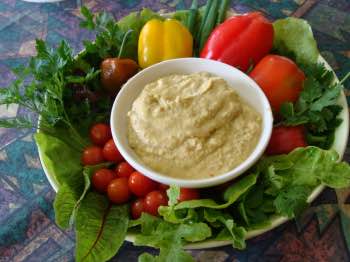
Carbo-phobia
Currently it is carbo-phobia that is in fashion. So what are the facts? Must anything with starch in it be bad for your wellbeing? Should we be avoiding beans, pumpkin and apples?
It is our standpoint that unrefined carbohydrates are good foods. Or at least most of them are; in moderation. So what's fact, what is fiction and where did this fashion start?
It all started with obesity. Yes, if you are seriously overweight, then the chances are good that you got that way by delectable refined carbs. Cornflakes for breakfast, a cola and snack bar mid-morning are the norm for many; and a white bread roll for lunch. Then if you have a cookie in the afternoon, pasta and a sweet dessert for dinner you are indeed sunk. A chocolate or two after supper would finish you off, particularly if you are inactive.
Are cereals like oats bad? Certainly not but if it's the quick variety in a box then it may be. Let us consider toast, bread rolls and pasta? Is the odd sweet dessert permissible and how about natural honey? This is where glycemic index comes in. It is a very user-friendly way of planning your meals.
"Take care lest in a capricious moment an indulgence sets the tone for the rest of your life. It happens; frequently."
COMPLEX AND SIMPLE CARBS
1. What are simple carbohydrates
"Simple" carbs are made of one or two glucose units.
Simple carbs are usually very rapidly absorbed into the blood stream requiring an insulin rush to control the level of sugar, storing it as fat; natural honey is an exception to this rule.
- Monosaccharides like glucose for example have just one sugar molecule.
- Disaccharides like sucrose, table sugar have two.
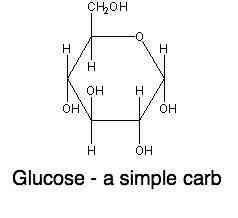
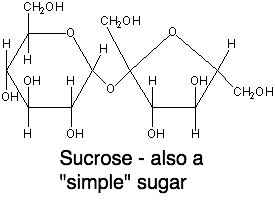
2. What are complex carbohydrates?
Carbohydrates consist of a chain of more than two sugar molecules.
In complex carbs, the sugars
are strung together in long chains which have to be broken down by
enzyme action before they can be digested. But when refined they are still rapidly absorbed into the portal blood stream and carried to the liver.
So certain complex carbohydrates also cause an insulin rush; enter Glycemic Index.
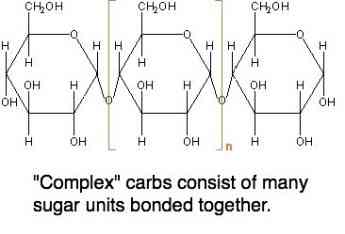
It is now apparent that the old adage, complex carbs are all good and simple sugars are bad is a gross over-simplification. The cold storage baked potato, refined oats and especially white rice for example are broken down very quickly into glucose in the intestine.
What is really important in this little dissertation on carbohydrate facts is how quickly that meal is turned into glucose in the bloodstream, not the individual parts of our food; and what sort of an insulin response does this breakfast produce?
Any meal that causes the blood sugar to rise rapidly and excessively, producing a huge insulin response by the body is detrimental to our wellness. In the first place the body must lower it, since high glucose is very bad for the capillary walls; by having it absorbed into the cells, firstly for energy and that's good but any excess is stored as adipose. It makes us fat.
You see insulin is the fat-storage hormone.
But secondly your blood sugar then rapidly drops and you feel hungry again; often drowsy, lethargic and yawning. So you reach for a snack; too much extra carbohydrate.
And thirdly this sets the scene for what is known as insulin resistance and Type 2 diabetes; well on the road to Metabolic Syndrome.
So what is important is not whether a food is a carb but how quickly it affects your blood sugar; enter Glycemic Index.
Carbohydrate Count Chart
The carbohydrate count chart, calories and glycemic index give you the clues you need; unrefined starches are in fact extremely nutritious and some should be eaten daily no matter what your weight.
Well that's an exaggeration. If you are seriously obese then you will also have to limit even the good carbs; small helpings can be enjoyed without guilt.
Glycemic index
The Glycemic Index (GI) is a simple scale used to indicate how fast and high a starch will raise your blood glucose; it's not all about the carbohydrate count chart.
Incidentally a continuous glucose monitor for two weeks would reveal all.
A food with a Glycemic Index below 55 will typically prompt a small to moderate rise in blood sugar, whilst carbs with a high GI (70+) will induce a rapid surge causing capillary disease and insulin resistance; and then obesity and diabetes if we live and eat that way every day.
There are two ways of calculating the GI. Do not get hung up on the absolute values or you will just get confused. Rather just focus on eating more of those foods with a lower Glycemic Index.
And when eating high GI starches always mix them with others like green beans, for example, protein and reasonable amounts of the friendly fats; that lowers the overall index.
Never eat plain macaroni, always with cheese or meatballs; and of course a green salad too. Not just bread but with butter or olive oil; and smeared with hummus, chicken or fish paste. Or perhaps a couple slithers of tomato and lettuce, both of which are low on the GI scale.
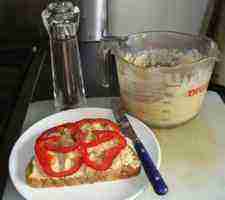 Hummus and paprika on bread
Hummus and paprika on bread- Is peanut-butter keto? Sadly not because food manufacturers add so much sugar.
In general you will not find carbs with a high glycemic index on a list of choice foods; but there are exceptions. A mango, bunch of grapes and skinned broad beans, for example have GIs above 70; so do watermelon and pumpkin. They are certainly good for us but should be eaten in the context of the whole meal; small helpings to keep the load down.
There are strange contradictions; biochemistry is a very complex subject. Despite its high GI pumpkin has been used traditionally for centuries to treat diabetes. It's all about two compounds called trigonelline and niacin which enable the liver enzymes to process glucose better; but still small portions.
Snack all day on grapes and you will certainly find yourself putting on weight. Glycemic Load gives you the measure of both how rapidly it will affect your blood-glucose; combined with the number of grams that are typically eaten.
Dietary fibre
Here are more carbohydrate count chart facts. Starchy foods with a low glycemic index mostly are rich in natural fibre, particularly the soluble like the pectin in apples; oats and legumes too pass more slowly through the gut and the absorption of the glucose content is delayed. Thus you feel more satisfied, are satiated and will tend to eat less. Obviously this is a winner takes all situation.
In fact that fibre makes up many of the grams of the carbohydrate; it's called resistant starch. It slows gastric-emptying.
Cutting out all the starch means grossly reducing the fibre in your diet too; then you will just get constipated. It makes no sense to try and lose weight to improve wellness by excluding foods like legumes that we should be enjoying regularly; frozen peas have a low glycemic index, for example.
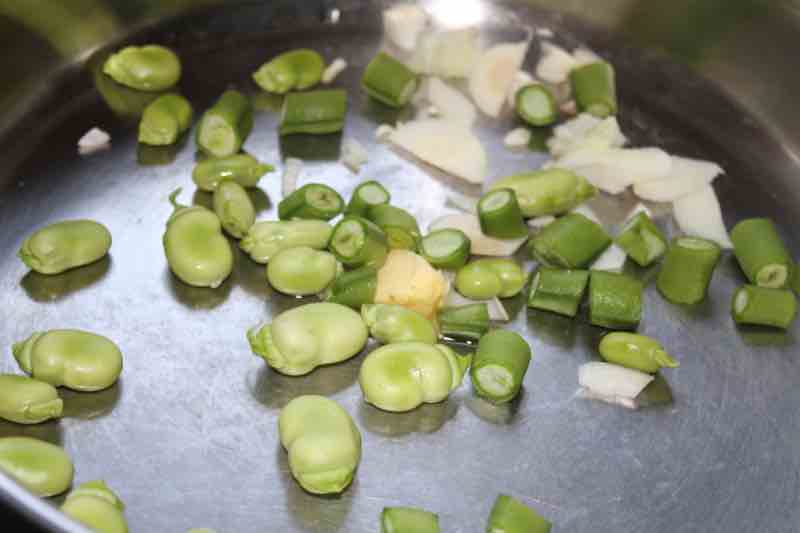 Broad beans are particularly rich in fibre
Broad beans are particularly rich in fibreBut foods that are low in fibre are rapidly processed by the gut, produce a sudden rise in blood-sugar and an excessive insulin response. It is okay now and again but if you eat high GI meals three times a day, plus snacks in between, then you get wild oscillations in plasma glucose; and are setting yourself up for diabetes, heart and capillary disease.
Parboiled rice has the same GI as glucose, by the way; 100. Bad stuff, it causes a very strong insulin reaction. If you insist on eating it, then you must have some fat with it; an avocado would be good.
A protein dish with at least three veg and a big salad will go a long way to counter the effect of that very high GI short-grain white rice.
Creamed natural honey is medium GI; when unrefined with the pollen left in it, it would have a much lower glycemic index. It is all about the fat and the fibre.
Maize in flower is a delight to the eye; corn on the cob has a low glycemic index of 48. It is just not true to say that a mealie makes you fat. But do limit the amount to keep the load down.
Foods with fibre require a lot of chewing; despite the benefit for our gums and gut the time causes many to eschew them.
Those that chew their food thoroughly incidentally are less likely to suffer from Alzheimer's Disease.
Cooking
Cooking foods increases the Glycemic Index, sometimes dramatically. For example, boiling a carrot raises the GI from 15 to 39; luckily it remains low.
Raw rolled oats has a GI of 5 but once cooked into a porridge it rises to 61; everything hangs on how much of the bran has been removed too. The boiling time gives you a good measure of how refined it is.
Also how you cook it affects how quickly carbohydrate is absorbed in the small intestine. For example, boiled sweet-potatoes are actually a low GI food; but bake or roast them and they become highly glycemic. Yes, it's not simple.
Planting sweet potatoes remains important at our green home; they are certainly a choice food. There is a weevil right now though that is getting the better of us.
Many vegetarians insist on eating at least half of their food raw. There is some sense in it.
Carbohydrate count chart
Here are a randomly chosen few carbohydrates, their total energy (per 100g) together with the glycemic index.
- Low GI: 55 or less
- Medium GI: 56-69
- High GI: 70+
Food
Apple
Strawberries
Orange
Bananas
Broccoli
Carrots
Chickpeas
Green peas
Sweet corn
Pastas
Oats
White rice
Brown rice
Potato boiled
Potato baked
White bread
Commercial WW bread
Stoneground sourdough
Rice crispies
Corn flakes
Kcals
52
32
49
89
35
35
164
-
96
131
389
123
111
-
-
87
266
247
372
387
GI
36
32
43
51
15
35
33
48
55
32-55
61
73
68
78
83
70
74
54
82
81
GL
4.7 very low
-
4.1
-
-
-
-
5
-
-
15
23 very high
-
-
-
9
10
8
21 high
23 v high
- Low GI Foods ... another good site.
Stoneground 100% wholemeal sourdough bread
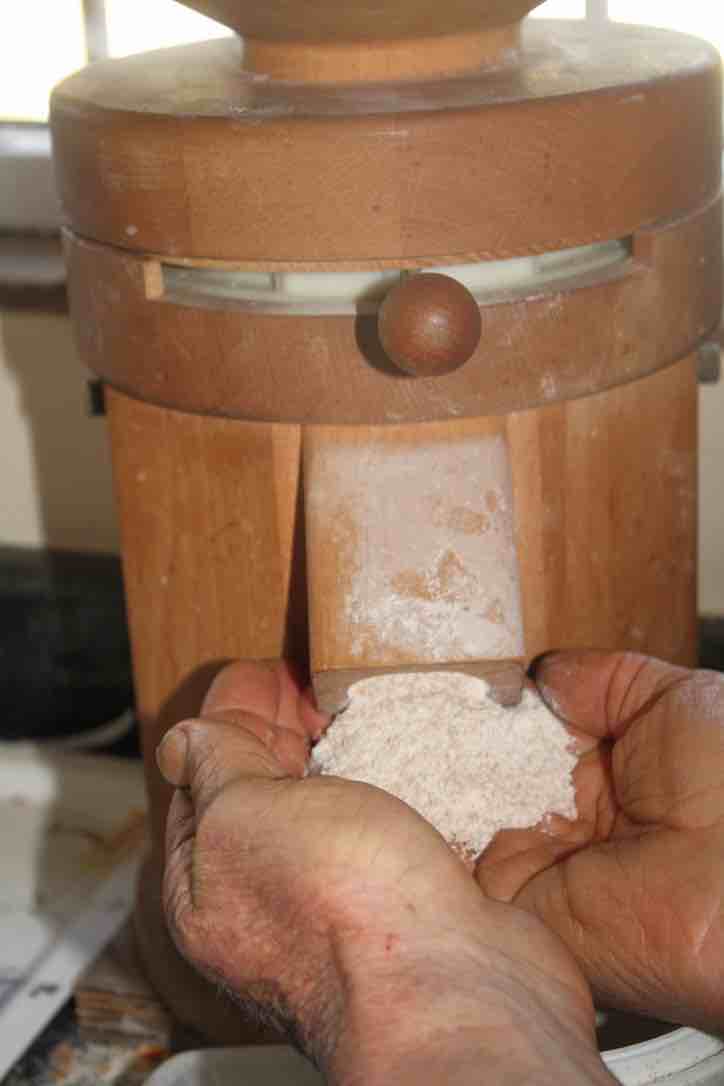
You will see wildly different figures for some of these grains in particular; it all has to do with how refined they are. There is also a big fat lie in the milling industry; they are allowed by international law to call their product "a wholemeal flour" provided they do not remove more than 40% of the goodies; the bran and germ. These are the factors that will dramatically affect the GI.
So despite a nutritious-sounding label, commercial wholewheat bread has a high glycemic index.
Stoneground wholemeal flour on the other hand is quite different; the three streams of endosperm, bran and germ are never separated and all are intact. It will have a lower GI.
The sourdough process takes it a step further, lowering the GI even further. The lactic acid released inhibits the amylase enzyme that digests the starch, slowing the process; the glucose is produced at a more sedentary rate having a much lessened effect on blood sugar.
In addition the acetic acid produced by the friendly bacteria predigesting the dough slows gastric-emptying giving a greater sense of satiety; and further delaying the action of the digestive enzymes.
Consequently stoneground sourdough bread made with 100% wholemeal flour induces a significantly lower plasma glucose response as compared to the commercial loaf.
And this is why southern Italians following the traditional Mediterranean way, with a very high proportion of their calories coming from starches, remain strong and virile into old age[1]; and resistant to the Coronavirus. For their compatriots in the north it's a completely different story. The island Sardinia is one of the Blue Zone places recognised for longevity.
SUMMARY
- Acetic acid inhibits the action of amylase
- Lactic acid slows gastric-emptying
- Stone-ground flour has all the bran and germ
Add a protein and fat
You will notice that chickpeas, also known as garbanzo beans have a high carbohydrate content,but a low glycemic index. Why is that? There are at least two reasons. Firstly, because they are also an excellent source of amino acids. Adding cheese to your bread roll, meat on your potatoes and beans with your corn lowers the GI of the overall meal.
Add a protein and fat to your meal to lower the glycemic index.
Legumes like lentils and peas have a built in mixture of protein and carbohydrate; that is what makes them one of the most nutritious and satisfying foods. They stay with you; satiate is the word. New Australian research proves that; it's not just anecdotal.
And secondly they have a high fibre content which also slows gastric emptying; that too lowers the glycemic index.
Thirdly in 100g of chickpeas there's 2.6g of good fat; it further lowers the glycemic-index of the legumes.
Interestingly an important study by Pittaway et al in J Am Diet Ass 2008 showed that four cans of chickpeas per week had an enormously beneficial effect on total serum cholesterol and especially the noxious low-density fraction; and the fasting insulin levels.
Insulin resistance was also lowered. Furthermore the fibre in chickpeas is significantly more effective than other sources in regulating blood cholesterol.
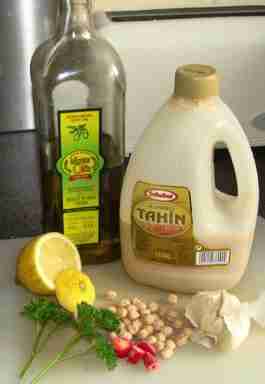
Chickpeas are very easy to cook but a little aforethought is
required. They have to be soaked overnight. Take this authentic hummus
recipe, for example; you can literally throw it together in only four minutes. You have to locate a source of ground sesame seeds known as tahini.
- Cooking chickpeas; a quarter of the price of those from cans and none of the noxious chemicals that leach into the food.
This AUTHENTIC HUMMUS RECIPE has a GI of only 6; that's unbelievably low.
Many of these starches have little flavour of their own; adding thyme herb benefits for example to your butternut or apple cider vinegar to your potato crisps makes them a lot more interesting.
We are currently experimenting with a peppadew honey mead vinegar that is looking very promising. Life in the kitchen is fun; keep it that way.
The lima bean is another is one of our favourites. The carbohydrate here too has a very low glycemic index; it is not fattening.
Growing lima beans may be of interest if you have a large garden. They are astonishingly prolific; all these came from one seed.
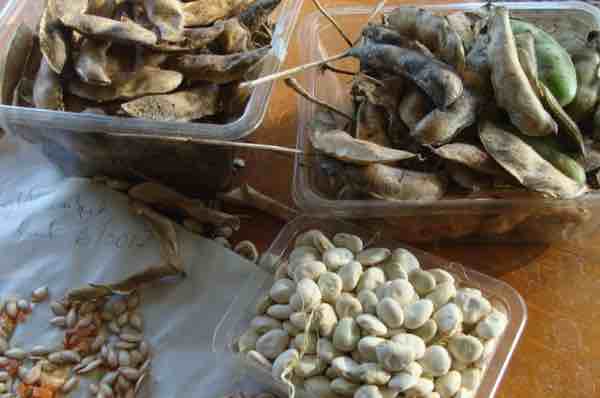
In the five Blue Zone countries of the world where living to a healthy, active ninety is the norm they eat sourdough bread made from wholegrain flour and legumes every day; in particular broad beans.
"Take care of your body. It's the only place you have to live."
Jim Rohn.
Particle size
Grinding grains into a flour dramatically increases their Glycemic Index. That is why bread (brown or white), cookies and cakes have a high carb load and GI.
Mixed with sugar, finely ground flour with no bran or germ makes a deadly pseudo-food for the body; high GI energy without nutrients.
"Good food contains nutrients for growth, repair and maintenance of body tissues; and energy to function."
- National Geographic
Chocolate cake is only for birthday parties; it does not qualify as a foodstuff. And you are
certainly not doing your children a favour by giving them cookies regularly.
Here is an aside. My grandchild recently turned two. It was distinctly noticeable how she and her sister behaved badly for the best part of a week. Finely-ground flour goodies, high in sugar were the order of the day; what is interesting is that a raised GI meal actually has a long lasting affect on your insulin production.
Food combining
Mixing high GI carbs together with protein and the good fats is what lowers the insulin response. For example add grated apple, sunflower and pumpkin seeds to go on your oats cereal rather than sugar. Surprisingly natural honey has a low glycemic index[4] but it's hard to find.
One can further reduce the GI of your breakfast by adding unsweetened yoghurt.
Use it with discretion even if you can locate natural honey which is unprocessed and rich in pollen from the hive; even as a beekeeper my limit is around 3 to 5 tsp per day. We eat almost no sugar.
Always have some protein for breakfast, as well as a cereal. I am a nut my family tells me but I sometimes add hummus to my muesli or porridge. It keeps me going for the day; it's known as the "subsequent meal effect."
Or enjoy a boiled egg, a small piece of fish or cheese. Avocado has a good fat and is perfect on a sandwich.
Olive pate, cottage cheese or peanut butter on wholegrain bread rolls would be other examples; tomato and lettuce too. A salad with your meat and potatoes is excellent; or pasta and chicken.
HELENS 15 EURO SALAD saved my life, literally.
Sweet basil pesto recipe is so easy to make in your own home with no chemical preservatives.
Seriously overweight?
Avoid the high protein shakes; it makes no sense to use unhealthy ultra-foods in an attempt to become hale and hearty. But do radically cut your high GI starches; eat only their unrefined cousins until you have reached your goal weight. Carbohydrate count chart factors aren't enough; rather think Glycemic Index.
A BMI around 22 to 25 is ideal; I am at 26 and not concerned.
OPEN by Andre Agassi
Read how Andre Agassi survived on lentil soup and baked potatoes, three times a day in his first months on the circuit. It was all he could afford. And he could not have chosen better for nutrients and sustained energy for an athlete.
But the food that this all-time great tennis player ate will break the hearts of the advocates of the ketogenic diets; it's very high in carbs.
USEFUL LINKS
When browsing use right click and "Open Link in New Tab" or you may get a bad gateway signal.
Newsletter
Our newsletter is entitled "create a cyan zone" at your home, preserving both yourself and Mother Earth for future generations; and the family too, of course. We promise not to spam you with daily emails promoting various products. You may get an occasional nudge to buy one of my books.
Here are the back issues.
- Lifestyle and ideal body weight
- What are ultra-processed foods?
- Investing in long-term health
- Diseases from plastic exposure
- Intensive lifestyle management for obesity has limited value
- A world largely devoid of Parkinson's Disease
- The impact of friendly bacteria in the tum on the prevention of cancer
- There's a hole in the bucket
- Everyone is talking about weight loss drugs
- Pull the sweet tooth
- If you suffer from heartburn plant a susu
- Refined maize meal and stunting
- Should agriculture and industry get priority for water and electricity?
- Nature is calling
- Mill your own flour
- Bake your own sourdough bread
- Microplastics from our water
- Alternative types of water storage
- Wear your clothes out
- Comfort foods
- Create a bee-friendly environment
- Go to bed slightly hungry
- Keep bees
- Blue zone folk are religious
- Reduce plastic waste
- Family is important
- What can go in compost?
- Grow broad beans for longevity
- Harvest and store sunshine
- Blue zone exercise
- Harvest and store your rainwater
- Create a cyan zone at your home
Bernard Preston
Bernard Preston is a retired DC intensely interested in wholesome living; he advocates thoroughly grasping the meaning of glycemic index and the carbohydrate count chart.
Understand them and follow their dictates, and you'll never have to follow the absurd edicts of that dirty four-letter word again.
Did you find this page interesting? How about forwarding it to a friendly book or food junkie? Better still, a social media tick would help.
- Bernard Preston homepage
- Starch
- Carbohydrate Count Chart
Address:
56 Groenekloof Rd,
Hilton, KZN
South Africa
Website:
https://www.bernard-preston.com